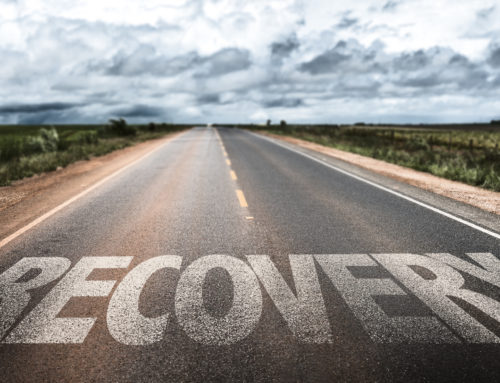 Cross addiction is a very real risk for people who have successfully completed a drug or alcohol treatment program at rehab. As chronic diseases, substance use disorders are so pervasive because of the way the brain processes pleasure and reward. This means that you can’t make addiction go away entirely, but you can gain control over your symptoms.
Cross addiction is a very real risk for people who have successfully completed a drug or alcohol treatment program at rehab. As chronic diseases, substance use disorders are so pervasive because of the way the brain processes pleasure and reward. This means that you can’t make addiction go away entirely, but you can gain control over your symptoms.
In some cases, you might inadvertently transfer addiction from one substance to another — or even to a behavior. Read on to find out what cross addiction is, plus some useful facts about the condition. We’ll also discuss which substances pose the highest risk for cross addiction and offer tips on how to avoid it.
What Is Cross Addiction?
When you’ve been to rehab as a result of a substance or alcohol use disorder, it’s crucial that you understand the additional risk you face for cross addiction. This term describes the process of replacing an initial addiction with a different one.
For example, someone who has struggled with alcoholism should avoid benzodiazepines or opiate painkillers wherever possible. Likewise, someone who’s been diagnosed with an opioid use disorder should avoid drinking alcohol.
6 Cross Addiction Facts
Here are six facts about cross addiction you may not have known:
1. Your Reward System Is Trying to Trick You
All addictive substances stimulate the same pleasure and reward system in your brain. It’s the same system that drives the pleasure you get from eating, sexual activity, sports and leisure activities.
Put simply, when you enjoy something a lot, your brain releases neurotransmitters to remind you to do it again. This system doesn’t differentiate between harmful and helpful activities, so the onus is on you to resist the temptation to repeat harmful behaviors.
For someone who’s diagnosed with a substance use disorder, exercising this control is much easier said than done. The best way to avoid cross addiction is to avoid psychoactive substances and carefully regulate your behavior using a variety of strategies.
2. People Are More Susceptible at the Beginning of Recovery
Cross addiction can occur at any point in the recovery process, but it’s more likely to happen when you first leave rehab. During this time, it’s essential that you stay ultra-vigilant, monitor your own behavior and actively regulate your well-being to give yourself the best chance of long-term recovery. It’s crucial that you attend meetings and one-on-one therapy if required.
Tools such as journaling, reaching out to friends, exercising, practicing hobbies and goal setting can help you to overcome this acute stage of the healing process. It’s important that you think in the long term when it comes to addiction.
This extra-high level of vigilance is necessary for at least a year after rehab. Over time, your coping strategies will become second nature, but it’s important to maintain them indefinitely. If you don’t actively do this, you could slip back into old habits.
3. Cross Addiction Can Seem Harmless
At first, cross addiction can seem like a harmless coping mechanism — even to a professional. It’s crucial that your day-to-day life remains balanced and you don’t let your field of interests gradually narrow down to just one thing. It’s not just substances that pose a risk, either; gambling, shopping, sex and other addictive behaviors are also a concern you should be conscious of.
4. Recovery Is an Ongoing Process
We can’t stress highly enough how important maintenance is. Rehab is the beginning of the recovery journey; you’ll soon get a deeper understanding of your condition and start building healthy defense mechanisms against relapse. It’s not the fix-all solution that magically cures you, though. You’ll need to work hard on an ongoing basis to make sure you don’t fall back into the substance abuse trap.
Addiction occurs for a complex mixture of genetic, environmental and social reasons. If you’re diagnosed, you just have to work that little bit harder to maintain your overall well-being and take all the necessary steps to manage your emotions.

5. Cross Addiction Is a Route Back to the Original Addiction
If you’ve just been through rehab, you probably remember the stage before you realized you had a problem. It’s striking how adept the addicted mind is at convincing you that addictive behavior is acceptable. Bear in mind that the same thing happens as cross addiction creeps in — you must be honest with yourself, your therapist and your loved ones about any habits that start to spin out of control.
6. It Is Avoidable
It takes ongoing effort and a variety of skills and strategies to avoid cross addiction, but it can be done. Something else that’s absolutely vital is that you mention your condition to any doctor who treats you in the future.
Prescription medication poses one of the biggest risks because it’s prescribed by a medical professional and fully legal. This makes it much easier to convince yourself that you’ll be fine. Just like with alcohol, total abstinence from psychoactive substances is recommended unless they’re absolutely necessary.
Tips for Avoiding Cross Addiction
- Take part in a variety of hobbies.
- Speak to friends and family openly about your feelings.
- Set healthy boundaries in all your relationships.
- Aim to work in a career you’re passionate about.
- Seek therapy on an ongoing basis.
- Keep a journal and focus on gratitude and goal setting.
Examples of Cross Addiction Risks
When it comes to addiction, pretty much any substance or behavior that causes pleasure is a potential risk. However, the most common cross addictions include:
- Alcohol to benzos
- Heroin to prescription painkillers
- Diet pills to cocaine
- Sleep aids to tranquilizers
- Ecstacy to meth
- Alcohol to gambling
Find Out More About Cross Addiction Today
If you’re concerned and would like to learn more about the risks of cross addiction, get in touch with one of the addiction specialists here at New Day Recovery today at 330-953-3300.







